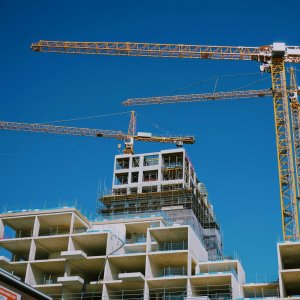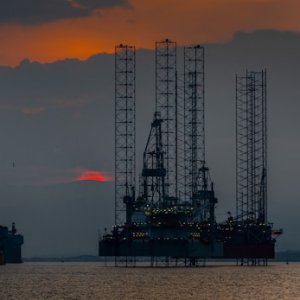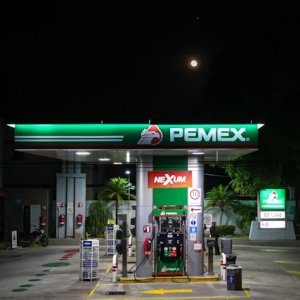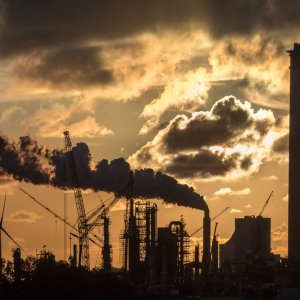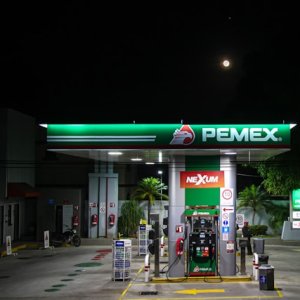Take the Time to Assess Social and Environmental Impact

STORY INLINE POST
Q: How is V&A addressing concerns regarding social and environmental issues?
A: Our clients are looking for legal certainty. They are worried about how long environmental and social processes will take regarding the authorizations of their permits or resolutions. Therefore, it is essential for project developers to understand that they need to focus on gathering information, preparation and assessments at least one year before activity on the ground begins. In Mexico, when developers are not involved in important social and environmental matters, complying with the many prerequisites becomes something of a surprise for them. They need to prepare much more than simply the construction.
Social and environmental impact assessments are obligatory for the hydrocarbons and electrical sectors. These assessments need to be prepared at the same time because the information gathered for environmental purposes will also be used in regard to buffers and social issues. Both need to contain the same information and be aligned and coherent. For example, in the hydrocarbons sector, this and other information needs to be submitted to CRE. It is crucial that the processes be done at the same time and with plenty of time.
Q: What information should companies prepare?
A: It is important to prepare the project’s basic information, including data from the construction and operational phases. It is also important to have a budget set aside to comply with the obligations flowing from the assessments. We believe companies need one year to ensure all their information is in order before submitting. Consultants generally need four to six months to prepare these applications and to conclude appropriate assessments, without rushing the information to be submitted to SEMARNAT or ASEA. Once the information has been submitted, companies need to consider that the authorities normally need 60 to 120 business days to issue a resolution on the environmental impact assessment. For the social assessment, SENER will need 90 business days, but currently they are short on human resources, so companies must take this into account. With the added challenge of the pandemic, we have observed resolutions taking over a year to complete. When companies sign operational contracts involving a specific date, they need to take this issue into account as well.
Q: What would you suggest the government do to improve its approach toward environmental and social assessments?
A: We would propose that the government develop a cohesive and unified authorization for both environmental and social impact assessments. We believe it is important to address both topics in just one resolution, as is already done in the US and Canada. Both evaluations should take place at the same time as well. Information from these assessments is often complementary, so it makes less sense to evaluate them separately. For this to happen, the government would need an adequate structure. V&A suggests that the environmental bodies SEMARNAT or ASEA incorporate staff into their structure with expertise on the social front. This will help them reduce wait times. SENER has few human resources to spare, so it would be better to use SEMARNAT and ASEA’s structure toward this integration.
Apart from this, the social impact resolution is just that: a resolution, containing recommendations, not an authorization. There is no obligation for developers to follow based on law. By unifying this with the environmental authorization, the government wields an instrument allowing them to enforce compliance with the terms and conditions set out in the unified authorization. It grants an additional legal punch to the authorization, making it more than the plain resolution that SENER’s social assessment currently represents.
Q: What value does the firm contribute to its clients during the stages before the assessment?
A: We recommend that project developers do feasibility studies, even before acquiring any land or property. By doing this, companies will have all the necessary information regarding the feasibility of their projects, as well as possible environmental or community-based barriers or benefits that specific areas in Mexico could present. Interested parties will also have a clear view on how much time would be needed to mitigate the impact from the project. If a project calls for the company to relocate or to compensate people, they need to be aware and plan for these arrangements. Our main goal is to avoid any surprises for our clients. It is important to be honest and clear about what is and what is not possible and to help them find solutions where necessary. V&A always works with specialized technical social and environmental teams that sit at the table, assess projects and provide a clear panorama.
Q: How have provisions regarding land use in forest terrains developed and changed?
A: With the recent reform to the forestry law, one must be aware of the communities affected by the project to be developed. The reform changed the authorization in the law. In the past, you would only need to submit a technical document based on the counting and sampling of flora present on the land. Also, you needed to submit proof of land possession. With the reform, the authorization must include indigenous consultation measures on which either SEMARNAT or ASEA and the National Institute of Indigenous Peoples will coordinate, in the case that the project intersects with indigenous territories. Developers need to be aware of the reform because it concerns every project that affects forest vegetation. I believe this is a big step for communities on the one hand. But on the other hand, it is another step and requirement that project developers must meet, not just in the energy sector but with any project that includes the removal of forest vegetation. This could include mining or tourism, but also people wanting to build a house in the woods, for example.
Q: How does V&A help clients secure their social and environmental license long after the project has gone operational?
A: Since the 2014 Energy Reform, we have gone beyond SENER’s regulatory requirements for impact assessments. Even before the reform, our firm focused on social consensus by working through meetings, research, questionnaires and more, all based on strict international parameters. Once the Energy Reform was enacted, we recognized that social and environmental issues were going to be enforced, so we continued to follow these standards in order to comply with best standards worldwide and beyond the bare legal requirements. Clients are generally happy when they are not required to take further measures because the strategy was done correctly the first time around. This approach provides a great deal of certainty.
V&A reviews developments regarding upcoming regulatory changes and analyzes how it fits in with current regulations and international standards. For example, a change to indigenous rights will be published soon. The current environmental impact procedure is to be modified as well because Mexico recently signed the international Escazú Agreement, which is based on previous human rights agreements. This will provide Mexico with a clearer path toward information access and environmental justice, considered important elements that will need to be included in Mexican projects and environmental impact procedures.
Q: How is V&A addressing concerns regarding social and environmental issues?
A: Our clients are looking for legal certainty. They are worried about how long environmental and social processes will take regarding the authorizations of their permits or resolutions. Therefore, it is essential for project developers to understand that they need to focus on gathering information, preparation and assessments at least one year before activity on the ground begins. In Mexico, when developers are not involved in important social and environmental matters, complying with the many prerequisites becomes something of a surprise for them. They need to prepare much more than simply the construction.
Social and environmental impact assessments are obligatory for the hydrocarbons and electrical sectors. These assessments need to be prepared at the same time because the information gathered for environmental purposes will also be used in regard to buffers and social issues. Both need to contain the same information and be aligned and coherent. For example, in the hydrocarbons sector, this and other information needs to be submitted to CRE. It is crucial that the processes be done at the same time and with plenty of time.
Q: What information should companies prepare?
A: It is important to prepare the project’s basic information, including data from the construction and operational phases. It is also important to have a budget set aside to comply with the obligations flowing from the assessments. We believe companies need one year to ensure all their information is in order before submitting. Consultants generally need four to six months to prepare these applications and to conclude appropriate assessments, without rushing the information to be submitted to SEMARNAT or ASEA. Once the information has been submitted, companies need to consider that the authorities normally need 60 to 120 business days to issue a resolution on the environmental impact assessment. For the social assessment, SENER will need 90 business days, but currently they are short on human resources, so companies must take this into account. With the added challenge of the pandemic, we have observed resolutions taking over a year to complete. When companies sign operational contracts involving a specific date, they need to take this issue into account as well.
Q: What would you suggest the government do to improve its approach toward environmental and social assessments?
A: We would propose that the government develop a cohesive and unified authorization for both environmental and social impact assessments. We believe it is important to address both topics in just one resolution, as is already done in the US and Canada. Both evaluations should take place at the same time as well. Information from these assessments is often complementary, so it makes less sense to evaluate them separately. For this to happen, the government would need an adequate structure. V&A suggests that the environmental bodies SEMARNAT or ASEA incorporate staff into their structure with expertise on the social front. This will help them reduce wait times. SENER has few human resources to spare, so it would be better to use SEMARNAT and ASEA’s structure toward this integration.
Apart from this, the social impact resolution is just that: a resolution, containing recommendations, not an authorization. There is no obligation for developers to follow based on law. By unifying this with the environmental authorization, the government wields an instrument allowing them to enforce compliance with the terms and conditions set out in the unified authorization. It grants an additional legal punch to the authorization, making it more than the plain resolution that SENER’s social assessment currently represents.
Q: What value does the firm contribute to its clients during the stages before the assessment?
A: We recommend that project developers do feasibility studies, even before acquiring any land or property. By doing this, companies will have all the necessary information regarding the feasibility of their projects, as well as possible environmental or community-based barriers or benefits that specific areas in Mexico could present. Interested parties will also have a clear view on how much time would be needed to mitigate the impact from the project. If a project calls for the company to relocate or to compensate people, they need to be aware and plan for these arrangements. Our main goal is to avoid any surprises for our clients. It is important to be honest and clear about what is and what is not possible and to help them find solutions where necessary. V&A always works with specialized technical social and environmental teams that sit at the table, assess projects and provide a clear panorama.
Q: How have provisions regarding land use in forest terrains developed and changed?
A: With the recent reform to the forestry law, one must be aware of the communities affected by the project to be developed. The reform changed the authorization in the law. In the past, you would only need to submit a technical document based on the counting and sampling of flora present on the land. Also, you needed to submit proof of land possession. With the reform, the authorization must include indigenous consultation measures on which either SEMARNAT or ASEA and the National Institute of Indigenous Peoples will coordinate, in the case that the project intersects with indigenous territories. Developers need to be aware of the reform because it concerns every project that affects forest vegetation. I believe this is a big step for communities on the one hand. But on the other hand, it is another step and requirement that project developers must meet, not just in the energy sector but with any project that includes the removal of forest vegetation. This could include mining or tourism, but also people wanting to build a house in the woods, for example.
Q: How does V&A help clients secure their social and environmental license long after the project has gone operational?
A: Since the 2014 Energy Reform, we have gone beyond SENER’s regulatory requirements for impact assessments. Even before the reform, our firm focused on social consensus by working through meetings, research, questionnaires and more, all based on strict international parameters. Once the Energy Reform was enacted, we recognized that social and environmental issues were going to be enforced, so we continued to follow these standards in order to comply with best standards worldwide and beyond the bare legal requirements. Clients are generally happy when they are not required to take further measures because the strategy was done correctly the first time around. This approach provides a great deal of certainty.
V&A reviews developments regarding upcoming regulatory changes and analyzes how it fits in with current regulations and international standards. For example, a change to indigenous rights will be published soon. The current environmental impact procedure is to be modified as well because Mexico recently signed the international Escazú Agreement, which is based on previous human rights agreements. This will provide Mexico with a clearer path toward information access and environmental justice, considered important elements that will need to be included in Mexican projects and environmental impact procedures.
Vera & Asociados is a leading firm in the application of best practices related to social and environmental impact assessments, while also delivering litigation services. Founder and Partner Luis Vera is a former director of ASEA.








 By Cas Biekmann | Journalist and Industry Analyst -
Tue, 05/25/2021 - 12:34
By Cas Biekmann | Journalist and Industry Analyst -
Tue, 05/25/2021 - 12:34



